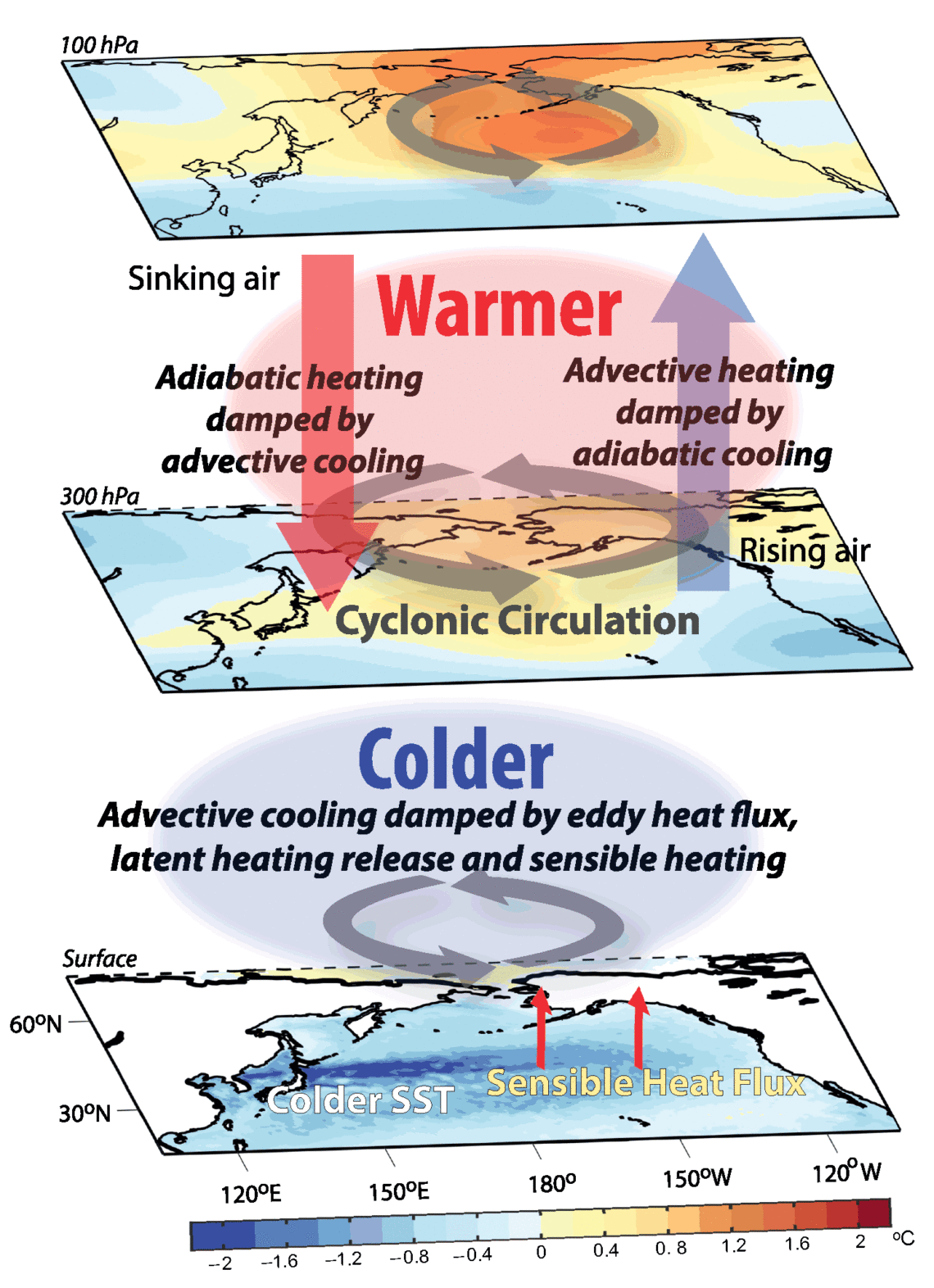February 15th, 2024
Key Findings
- This research reveals that biases in the North Atlantic significantly reduce the surface heat fluxes released from the North Atlantic into the atmosphere.
- This induces negative lower tropospheric temperature anomalies in the mid-latitudes, setting off a chain of reactions that impact storm tracks over the northern hemisphere and the large-scale extreme precipitation over the Western United States.
- This work highlights the critical relationship between the horizontal advection of temperature changes and the adiabatic heating in the upper troposphere and lower stratosphere (UTLS) over the extratropical North Pacific.
- The UTLS vertical motion response can provide a rough estimation of the UTLS warming response over the extratropical North Pacific.
Rajat Joshi, Rong Zhang. npj Climate and Atmospheric Science. DOI: 10.1038/s41612-023-00482-4
The interplay between the ocean and atmosphere plays a crucial role in shaping weather patterns and temperatures around the world. Yet, the winter upper troposphere/lower stratosphere (UTLS) temperature/vertical motion response over the extratropical North Pacific induced by North Atlantic changes is not well understood.
Using GFDL’s high-resolution climate model CM2.5, the authors corrected the North Atlantic Ocean circulation biases to unravel the wintertime atmospheric impacts. They showed that biases in the North Atlantic significantly reduce the surface heat fluxes released from the North Atlantic into the atmosphere. These changes, in turn, induce negative lower tropospheric temperature anomalies in the mid-latitudes, setting off a chain of reactions that impact storm tracks over the northern hemisphere and large-scale extreme precipitation over the western United States.
In the UTLS over the extratropical North Pacific, this winter warming temperature response is linked to the vertical motion response through a simple leading order thermodynamic relationship between changes in the horizontal advection and adiabatic heating. The UTLS vertical motion response, which is also associated with the North Atlantic induced Walker circulation response over the tropical North Pacific, can provide a rough estimation of the UTLS warming response over the extratropical North Pacific.
This study also suggests that a stronger North Atlantic-induced Walker circulation response over the tropical North Pacific contributes to a stronger UTLS vertical motion/ temperature response and associated jet stream response over the extratropical North Pacific. The study underscores the broader implications of the interconnectedness of global oceanic and atmospheric systems and lays a reliable foundation for predicting the impacts of North Atlantic Ocean circulation changes on global weather and climate systems.



